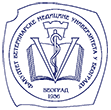

Volume 74 (2024) Issue: 2024 No#3
Exploring the therapeutic potential of bee venom components in wound healing: a comprehensive evaluation of morphometric, biochemical, and histopathological markers
Author(s): Barış Denk, Volkan Yaprakci, Belma Dayi, Alper Sevimli, Jevrosima Stevanović, Uros Glavinić, Zoran Stanimirović
Keywords:Angiogenesis, Honeybee, Oleic acid, Phospholipase A2, Secapin, Wound healing
Bee venom (BV) and its components, secretory phospholipase A2 (sPLA2) and Apis cerana secapin-1 (AcSecapin-1), have potential effects on wound healing. This study aims to evaluate impact of BV, sPLA2, and AcSecapin-1 on full-thickness wound healing in male Wistar Albino rats over a 7-day period. Various morphometric (body weight, wound contraction), biochemical (hydroxyproline, oleic acid, IL-8, TGF-β1, redox parameters), and histopathological markers (reepithelialization, inflammatory cells, angiogenesis, fibroblast activation, and collagen density) were assessed. Treatment with sPLA2 and AcSecapin-1 increased oleic acid levels. IL-8 levels increased with sPLA2 treatment, and TGF-β1 levels increased with AcSecapin-1 treatment. BV and its components led to a decrease in FRAP levels. Additionally, BV treatment resulted in reduced angiogenesis, and both BV and sPLA2 treatments reduced inflammatory cells. All groups exhibited wound contraction without delay or regression. sPLA2 and AcSecapin-1 induced alterations in the wound healing milieu, without systemic changes. The treatment groups, except for the AcSecapin-1 group, showed an anti-inflammatory effect, identified by reduced inflammatory cell accumulation. Only the BV treatment suppressed angiogenesis. In conclusion, BV, sPLA2, and AcSecapin-1 demonstrate distinct effects on wound healing, with BV showing notable anti-inflammatory and anti-angiogenic properties, while sPLA2 and AcSecapin-1 influenced cytokine and oleic acid levels.
My account
Search
Info
ISSN: 0567-8315
eISSN: 1820-7448
Journal Impact Factor 2023: 0.7
5-Year Impact Factor: 0.8
Indexing: Thomson Reuters/Science Citation Index Expanded, Zoological Record, Biosis Previews, Web of Science, Journal Citation Reports, Google Scholar, SCIndeks, KoBSON, Genamics, Journal Seek, Research Gate, DOAJ, Journal Rate, SJR – SCImago Journal & Country Rank, WorldCat, Academic Journals Database, Medical Journals Links, MedSci, Pubget